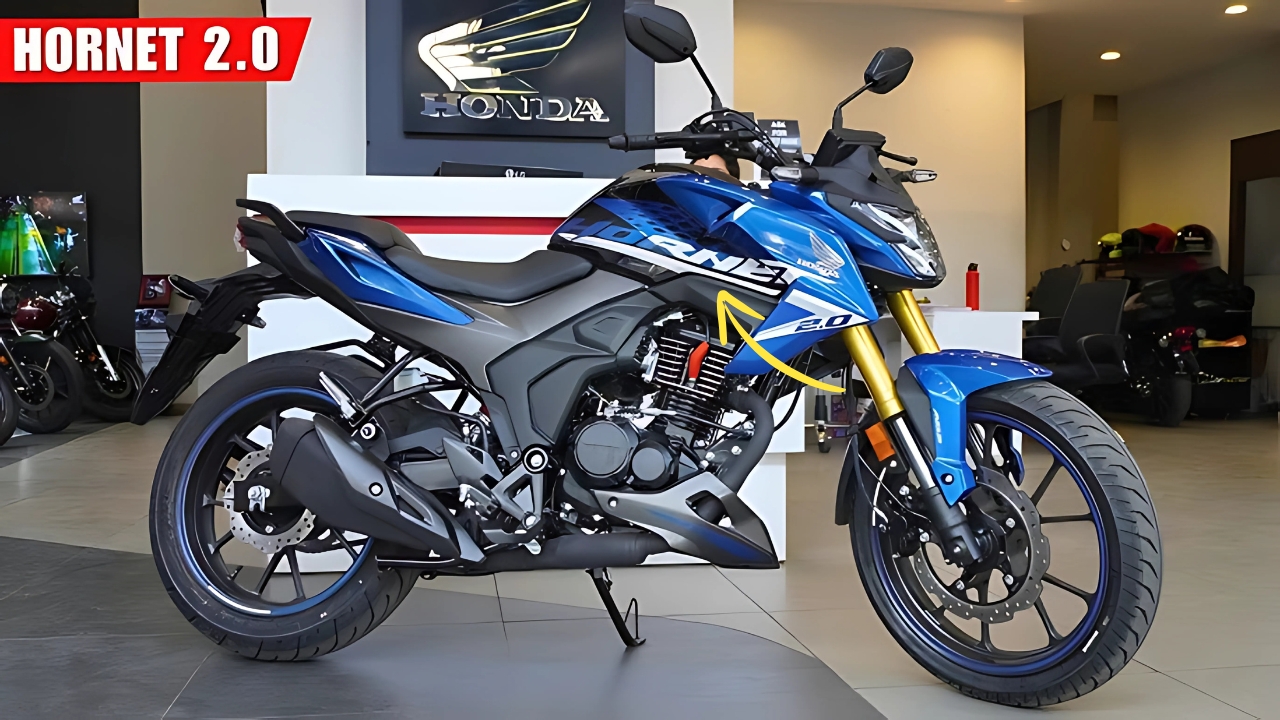Honda Hornet 2.0 : After years of feeling slightly outdated in the features department, Honda’s naked streetfighter has received the kind of update that actually matters. The 2025 Hornet 2.0 isn’t just another cosmetic refresh – it’s Honda finally acknowledging that modern riders expect more than just refined engineering and reliability from their motorcycles.
The Price Hike That Actually Makes Sense
Let’s address the elephant in the room first: at ₹1,56,953 ex-showroom, the new Hornet costs ₹14,000 more than its predecessor. That’s not pocket change, but here’s the thing – for once, a price increase feels justified rather than opportunistic.
The headlining addition is a 4.2-inch TFT display with Bluetooth connectivity via Honda’s RoadSync app. This isn’t just about looking modern; it brings genuinely useful features like turn-by-turn navigation, call alerts, and SMS notifications. Considering how smartphone integration has become basic expectation rather than luxury, Honda was embarrassingly late to this party.
The display quality itself impresses. Clean, informative layout with five-level brightness adjustment that actually works in bright sunlight – something many manufacturers still struggle with. It’s the same unit found on Honda’s latest scooters, which means proven reliability rather than experimental technology.

Safety Updates That Were Long Overdue
The bigger story might be the safety upgrades. Dual-channel ABS replaces the previous single-channel setup, while Honda Selectable Torque Control (HSTC) joins the feature list.(Honda Hornet 2.0) Traction control on a 17-horsepower motorcycle might seem excessive, but anyone who’s ridden on Indian roads knows how unpredictable surfaces can be.
These additions position the Hornet closer to its competition, particularly the TVS Apache RTR 200 4V, which has been offering similar features for years. Honda’s traditional approach of “build it right the first time” works for reliability, but it leaves them vulnerable when rivals move faster on technology adoption.
The USB Type-C charging port also deserves mention – a small detail that shows Honda understanding how riders actually use their bikes in 2025.
Engine Tweaks: The OBD2B Reality Check
Under the hood, the 184.4cc single-cylinder engine now complies with OBD2B emission standards, resulting in a minor power drop to 16.7 bhp and 15.7 Nm. That’s down from 17.2 bhp and 15.9 Nm – negligible on paper, barely noticeable in practice.
The real-world riding experience remains Honda’s strength. That air-cooled motor delivers consistent performance with minimal vibration, especially impressive given the lack of liquid cooling. The five-speed gearbox with assist and slipper clutch continues to be smooth and predictable.
User-reported mileage figures of 45 kmpl keep running costs reasonable, though don’t expect the claimed ARAI figure of 57.35 kmpl in actual riding conditions. Still, for a 180cc motorcycle, those numbers remain competitive.
Design Language: Evolution Over Revolution
Visually, the 2025 Hornet retains its aggressive streetfighter stance while gaining updated graphics across four new color options: (Honda Hornet 2.0)Pearl Igneous Black, Radiant Red Metallic, Athletic Blue Metallic, and Matt Axis Gray Metallic. The Athletic Blue launch color particularly stands out, creating nice contrast with those distinctive golden USD forks.
At 142kg kerb weight, the Hornet remains one of the lighter motorcycles in its segment. This translates to nimble handling in city traffic and confidence-inspiring behavior when cornering – something heavier rivals struggle to match.
The 790mm seat height suits most Indian riders, while 167mm ground clearance handles typical road conditions without drama.
Mahindra Scorpio N – Dhansu design SUV launch with interior features
Market Positioning: The Sweet Spot Challenge
Here’s where things get interesting. At ₹1.57 lakh, the Hornet sits uncomfortably close to more powerful alternatives like the Bajaj Pulsar NS200 and the feature-rich TVS Apache RTR 200 4V.Both offer liquid cooling, more power, and established track records in this segment.
However, the Hornet’s appeal lies in Honda’s reputation for long-term reliability and refinement. While rivals might offer more excitement on paper, the Hornet promises years of trouble-free ownership – a significant consideration for practical buyers.
The waiting period of around two weeks in major cities suggests steady demand, with sales figures of 1,273 units in May 2025 showing healthy improvement over previous months.
Honda Hornet 2.0 The Verdict: Finally Competitive
The 2025 Hornet 2.0 represents Honda catching up rather than leading, but sometimes that’s exactly what’s needed.(Honda Hornet 2.0)By addressing the most glaring feature gaps while maintaining their traditional strengths, Honda has created a more complete package.
It’s not the most powerful or exciting option in its segment, but it might be the most sensible. For riders prioritizing reliability, refinement, and now adequate technology over raw performance, the updated Hornet finally makes a compelling case for itself.
